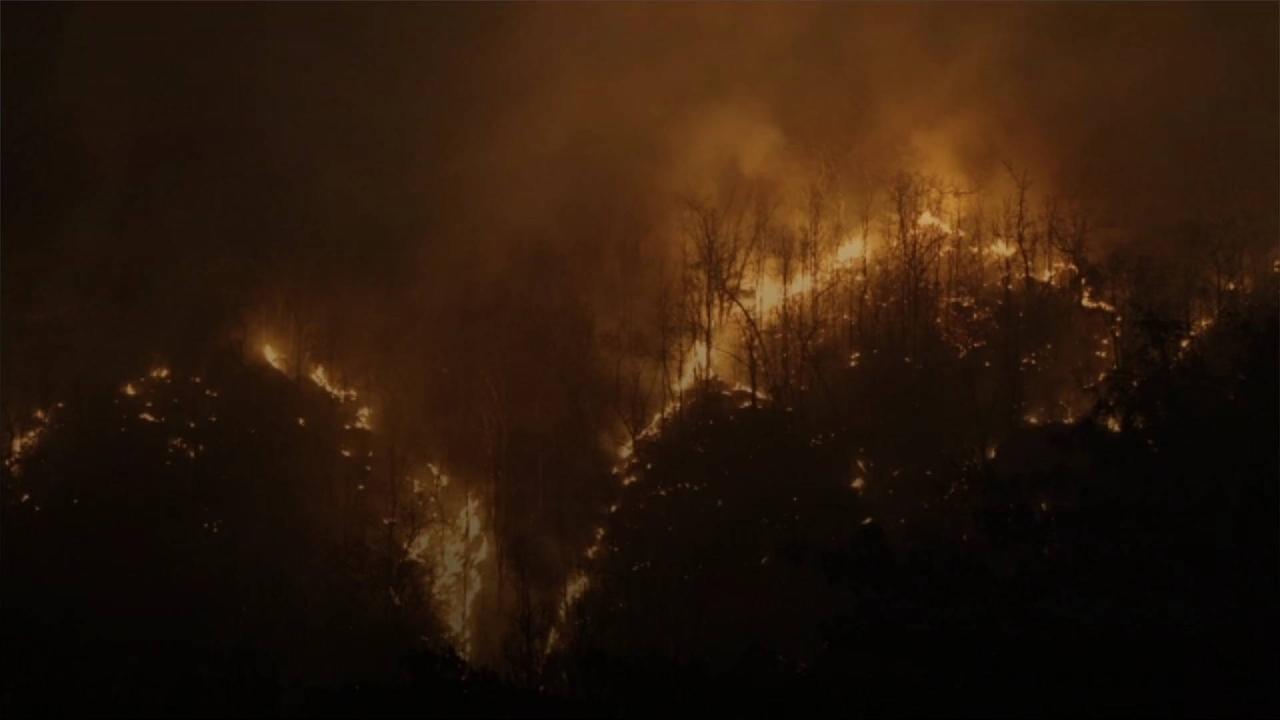Climate Change Altering Wildfire Patterns, Increasing the Risk of Night Fires

Climate Change Altering Wildfire Patterns, Increasing the Risk of Night Fires
Climate Change Altering , Wildfire Patterns, , Increasing the Risk of Night Fires.
'Newsweek' reports that North America is facing an "emerging phenomenon" in which the dangerous conditions that spawn wildfires occur during the night.
.
Typically, these conditions have only existed during the daytime, as the cooler temperatures of night usually alleviate these conditions.
Researchers found that accumulated fuel dryness brought on by drought has led to fires thriving at night.
.
I think it is important to bring this emerging phenomenon to the public to let them know that the night might not save us, Kaiwei Luo, Ph.D.
Student at the University of Alberta's Faculty of Agricultural, Life & Environmental Sciences, via 'Newsweek'.
The team's findings challenge conventional methods of fighting wildfires, as cooler night temperatures and higher humidity previously worked to slow wildfires' growth.
Originally, I had thought that since nights are warming faster than days, higher temperatures and the associated lower relative humidity at night would lead to more overnight fires, Mike Flannigan, University of Alberta professor emeritus and researcher with Thompson Rivers University, via 'Newsweek'.
In the extreme cases, there would be no difference between an overnight burn event and daytime burning, Kaiwei Luo, Ph.D.
Student at the University of Alberta's Faculty of Agricultural, Life & Environmental Sciences, via 'Newsweek'.
Researchers found that daytime drought conditions could be used as a , "predictor of overnight burning events.".
Nighttime burning has long been overlooked.
In a warmer and drier world, we can use daytime drought indicators to predict the night.
More of these fires also increase the likelihood of a catastrophic fire, Kaiwei Luo, Ph.D.
Student at the University of Alberta's Faculty of Agricultural, Life & Environmental Sciences, via 'Newsweek'


![Canada Strikes Back: Carney Slaps 25% Tariff On US Cars Over Trump's "Unjustified" Move [Video]](https://video.newsserve.net/300/v/20250404/1407122222-Canada-Strikes-Back-Carney-Slaps-25-Tariff-On.jpg)
![Eye on the sky: Northern Hemisphere witnesses partial solar eclipse on Saturday [Video]](https://video.newsserve.net/300/v/20250329/1406554016-Eye-on-the-sky-Northern-Hemisphere-witnesses-partial.jpg)
![Aging Energy Infrastructure Plus Climate Change Are a Growing Risk [Video]](https://video.newsserve.net/300/v/20240314/1368658736-Aging-Energy-Infrastructure-Plus-Climate-Change-Are.jpg)